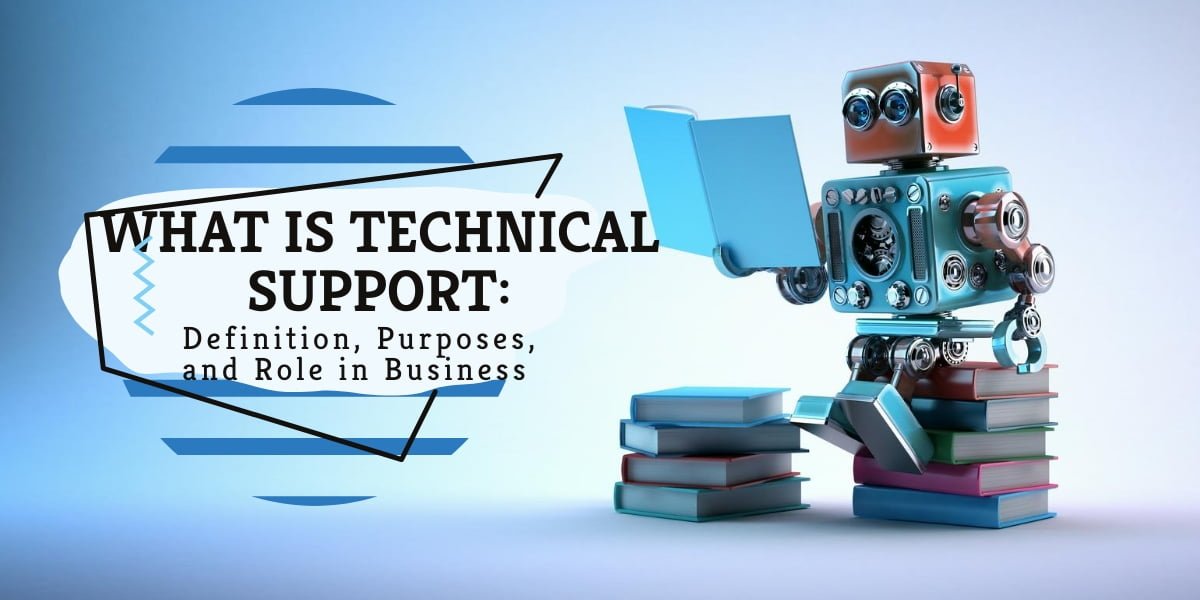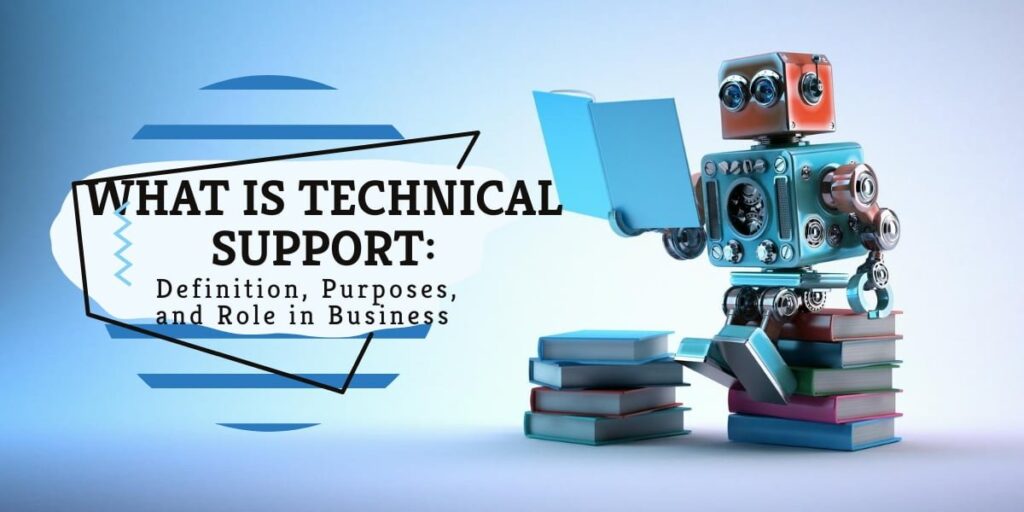What is technical support: definition, purposes, and role in business


What Is Technical Support? Definition And Meaning
It is hard to imagine any online business today without reliable, stable tech support. What is technical support? This term stands for a range of services aimed at providing website or app users with fast help with any issues that may arise. In most cases, such services should be available around-the-clock so that the visitors can ask questions and solve urgent disputes at any time.
You may also ask, “What is virtual technical support?” Its functions are the same with the only difference: while you may get traditional technical support by visiting the physical office of the enterprise, a virtual does not require you to leave your home. You can access it remotely having an Internet connection.
Unfortunately, not all modern companies understand the significance of tech support, and that is why many of them fail to satisfy their clients. Also, it is essential to avoid common confusions: technical support is not to educate users, but rather to assist them with their queries.
Technical support can be of several different levels. These levels predetermine the obligations of its reps and purposes of the teams:
- Level-one tech support
- Level-two tech support
- Level-three tech support
- Other levels (less popular)
So, what is the role of technical support? What are the significant differences between those levels? How should one know which one to use? The sections below will explain why technical support is important.
What Is The Role Of Technical Support And Its Purposes?

Technical support reps should fulfill several responsibilities. The main one is to meet the customer’s needs in the most effective and fastest possible way. Creating a waiting line on the phone or in chat is a bad habit. Being rude or impatient is a bad habit too.
Thus, one can conclude that being a tech support representative requires more than advanced technical skills and knowledge of the product or service, it demands outstanding communication skills.
A technical support rep must train users and consult them on the product or service, but they are not offering tutoring in the specific field.
To work more efficiently, such specialists should test the goods themselves to find out how easy and convenient they are for an average person. They can suggest some improvements and fixes. So, why is there a tremendous need for technical support? These experts alone may either improve the company’s reputation or fully destroy it by failing to cope with their responsibilities. Thus, businesses should be cautious and selective when hiring such staff.
What Is L1 L2 L3 Support? Compare And Contrast
Many people wonder, “What Is L1 L2 L3 support?” To tell you more, even level-zero support exists. As you may guess, it refers to the process of trying to figure out everything on your own by reading manuals offered by the company. All websites provide some kind of support web pages such as how-to guides, product descriptions, and FAQs. In the case of L0 tech support, a client has no other choice than to look for the solutions to their problem alone. If a user does not manage to get the answers, they may contact the company’s reps using emails, social accounts, and other communication methods. However, once they get a reply, it stops being an L0 tech support.
What is the meaning of level one support then? Level-one support offers the basic assistance desk resolution. Such type of technical support deals with the smallest issues like little bugs or usage problems. L1 support is provided by the junior specialists able to cope with the known issues and lack creativity and professionalism to handle force majeure. So, what is the difference between L1 and L2 support?
The next, L2 support, is the responsibility of the skilled technicians with solid experience that are trained enough to handle the problems unknown to the previous level reps. The client will obtain a more profound knowledge of the good or service. However, these experts are not still the developers of the product, so they will escalate the case to the upper level.
The next stage is L3 support. The main features of it include:
- Professional good and service support (perhaps, even the creators)
- Access to the highest tech resources
- New feature creation to get rid of the issue
- Usage of advanced tools such as product designs and codes
- Preparation of documentation for the low levels of tech support
What If Even L3 Is Not Capable Of Finding The Solution? Keep On Reading To Find Out What The Next Level Is.

L1 Outsourced Technical Support for Emergency Cases
If nothing listed above helps, an organization along with the client can only count on the help of so-called L1 outsourced technical support or other levels of the third-party technicians. It means turning for help to the external agencies or freelance experts. If the company has no other choice, it can obtain contracted support from the services that specialize in the same field. On the whole, outside support is associated with:
- App support
- Vendor support
- Printer support
- Machine maintenance
- Depot support
Usually, companies have their preferred parties to provide outsourced tech assistance. They agree on the fees and tend to cooperate on a long-term basis.
If the organization wants to avoid using any outsourced, third-party support, it should learn how to improve the technical support department. The most common recommendations of the experts are:
- Add a live chat feature
This tool effectively removes barriers between the user and support, allowing to type a quick message and get a fast response. It appears user-friendly and convenient.
- Work round-the-clock
Some companies fail to meet the needs of their clients by refusing to include 24/7 support. It is vital as various customers come from different time zones.
- Cover all the channels
A company should provide its clients with an opportunity to move across channels for fast help. Another goal is to supply staff with the auto-technology required to pull the client info and history.
- Remain social
Forget about the days of helplines – they are smoothly dwindling. Organizations should actively invest and incorporate social into client support programs.

Team That Meets All Requirements of the Excellent Tech Support
Now that you know the answers to such questions as, “What is L1 support in networking,” you may want to know more about our support. No matter at which time of day or night you turn to us, we promise to provide you with the top-qualified technical support. We hire only senior tech experts to represent our services. Our goal is to reply to all of your queries, help you fix bugs, or solve urgent disputes as fast as possible.
Yes, you can reach us via phone and email. We also have that 24/7 live chat. Typically, our reps respond in several minutes or even seconds no matter when you decide to contact them. We have enough tech support representatives on board to serve you. Thus, do not hesitate to contact them in case of any questions, complaints, or suggestions.
Looking for specific information?
Our specialist will help you find what you need in customer service outsourcing
Book a callDiscover Contact Center Perspectives Podcast
Discover the themes that resonate most with your challenges
 English
English





